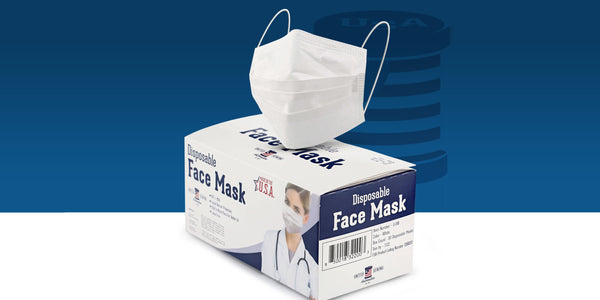4 Ways Masks Slow the Spread of COVID-19
As states lifted stay-at-home orders, numbers of those infected with COVID-19 continued to rise. As a result, many communities began requiring face coverings in most public spaces.
That represented a shift in sentiment. At the pandemic’s outset, institutions such as the Center for Disease Control and the World Health Organization did not recommend masks for the general public. Now, most experts agree that the more people who cover their mouth and nose when in the public, the more the virus’ spread can be slowed.
Infection disease specialist Peter Chin-Hong was quoted in a University of California San Francisco article saying that without high disease prevalence early on, there wasn’t a need to suggest face coverings. He called that period a “false sense of security,” and that American culture would be resistant to a suggestion Asian nations have grown accustomed to, to prevent virus infection and protect against smog.
As numbers of those infected rose and researchers discovered pre-symptomatic and asymptomatic spread was not only possible but probable, the call to cover faces became louder.
Here’s how masks slow the spread of COVID-19.
1. They block respiratory droplets
The New England Journal of Medicine conducted an experiment on droplets with high-speed video. It revealed that in speaking a simple phrase produced hundreds of droplets, measuring from 20 to 500 micrometers. A damp cloth covering the mouth stopped nearly all of them.
2. They’ve demonstrated effectiveness in epidemiological studies
No one would fun - nor volunteer for! - a study that would expose them wittingly to a potentially deadly virus. Scientists have gleaned data from real-life situations. A sample:
- Mask mandates set in 15 states and Washington D.C. led to a slower daily growth rate in all locations. It slowed .9 percentage points in the first five days, and by 2 percentage points after three weeks. (Healthy Affairs).
- A man with coronavirus symptoms flew from China to Toronto. He had a dry cough and wore a mask. He later tested positive for COVID-19, but none of the 25 passengers closest to him on the flight tested positive. (Cmag Group)
- Researchers found lower death rates from COVID-19 in nations in which cultural standards or government policy encourages mask-wearing. (Researchgate).
- Two hairstylists in Missouri, both infected with coronavirus, had close contact with a combined 140 customers while sick. Everyone wore masks and no clients tested positive. (Washington Post).
3. They’re effective source control
Smaller expelled droplets can travel farther than bigger ones. A mask can hinder droplets from evaporating into the smaller, more mobile ones.
4. They boost risk reduction
When worn over the nose and mouth and not compromised or worn incorrectly, masks from N95s to bandanas can slow the spread of viruses. Even the masks with the best regard for effectiveness, the N95, becomes ineffective if not fitted and worn properly.
Keep fingers away from the inside of the mask. Keep them on 100% in public, especially when you’re having a conversation. Throw away disposable masks after use, and don’t touch the outside of the mask when removing it. Wash your hands thoroughly after taking it off.
Sources:

